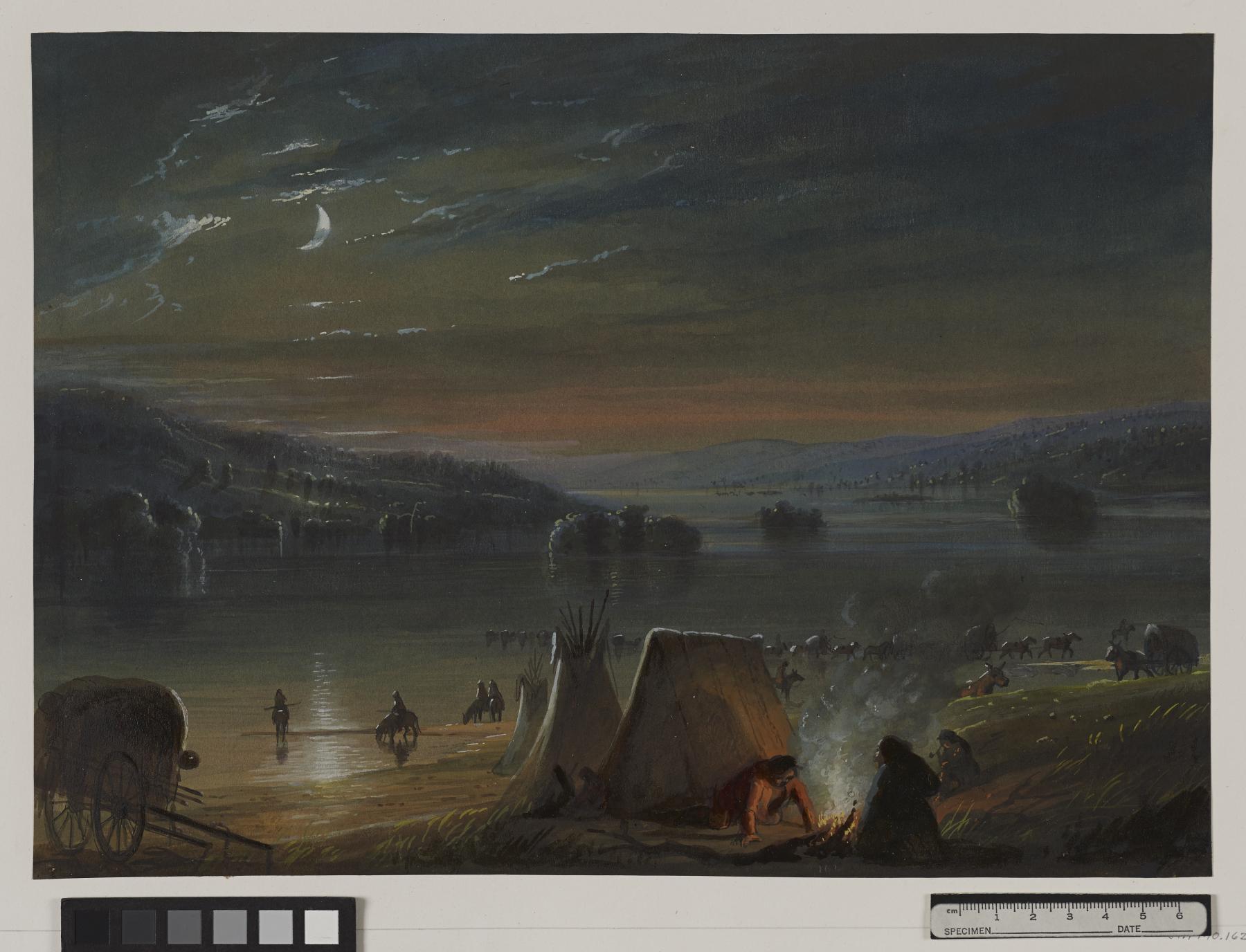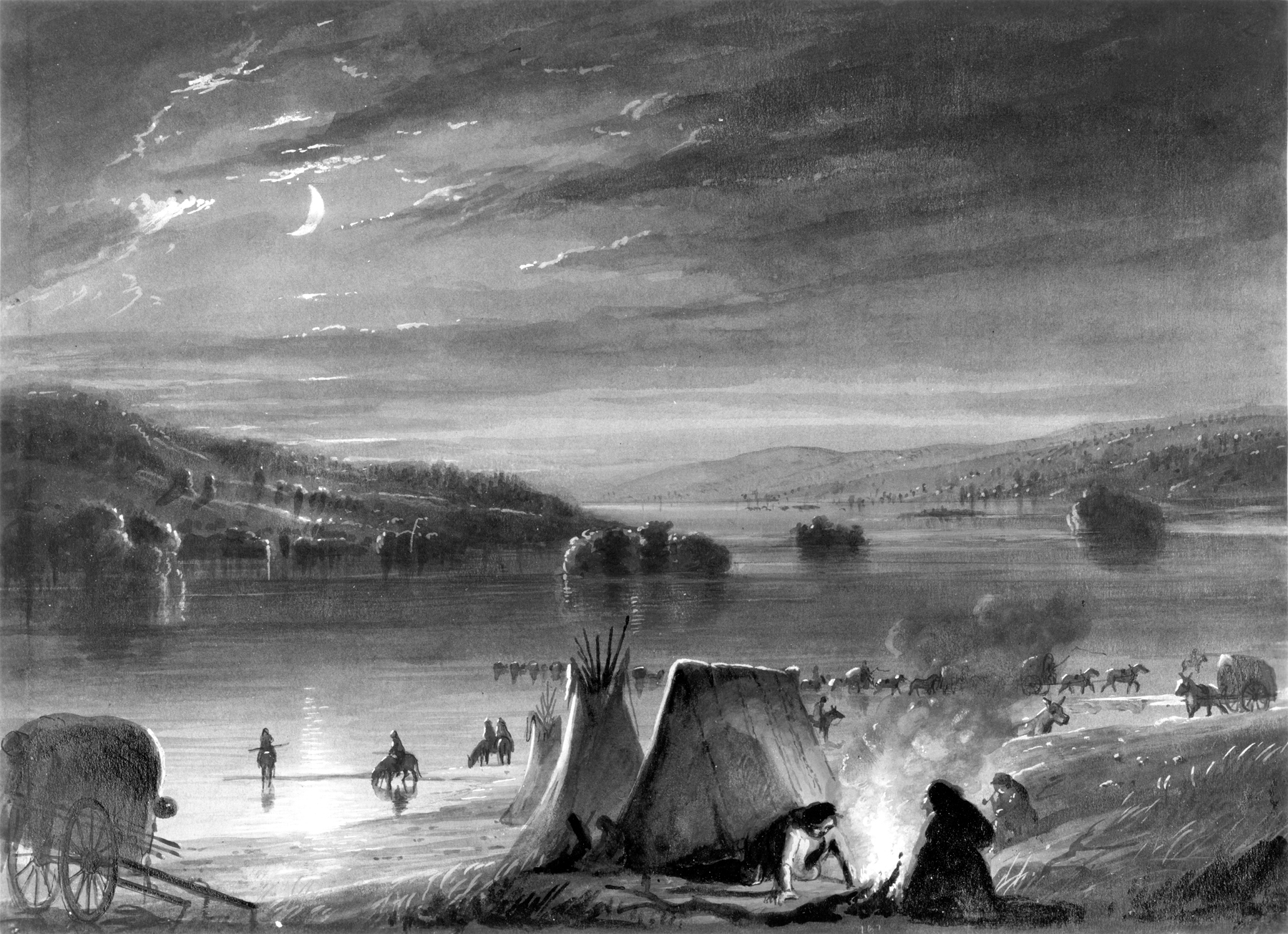Crossing the River: Moonlight
(18th and 19th Centuries )
Extracts from Alfred Jacob Miller’s original text, which accompanied his images of Native Americans, are included below for reference. These words, which shaped how Miller’s contemporaries viewed the watercolors, reveal the racism and sexism embedded in 19th-century exploration and colonization of the western part of what is today the United States.
"Daylight still lingers on the horizon, but the moon gives light. The Camp is belated, and a successful effort has been made to coss the river,- it being shallow enough to pass the vehicles without injury to the goods they contain. On arriving at the banks of a river, late or otherwise, a crossing is effected (if possible) so as to start early on the following morning;- our purveyors are bustling to provide a supper for these hungry men, the evening meal being the most lively of any;- the work for the day being finished, they are at leisure;- the incidents thereto are brought forward, commented upon and criticized; the hunters relate their adventures among the 'varmint.' the greenhorn listens, & wishes 'That heaven had made him such a man.' If not too tired the Canadians get up for a dance, while others chaunt or play the tune. Last scene of all the mountaineers is streched out with 'his back to the earth, his feet to the fire.'" A.J. Miller, extracted from "The West of Alfred Jacob Miller" (1837).
In July 1858 William T. Walters commissioned 200 watercolors at twelve dollars apiece from Baltimore born artist Alfred Jacob Miller. These paintings were each accompanied by a descriptive text, and were delivered in installments over the next twenty-one months and ultimately were bound in three albums. Transcriptions of field-sketches drawn during the 1837 expedition that Miller had undertaken to the annual fur-trader's rendezvous in the Green River Valley (in what is now western Wyoming), these watercolors are a unique record of the closing years of the western fur trade.
Provenance
Provenance (from the French provenir, 'to come from/forth') is the chronology of the ownership, custody, or location of a historical object. Learn more about provenance at the Walters.
William T. Walters, Baltimore, 1858-1860, by commission; Henry Walters, Baltimore, 1894, by inheritance; Walters Art Museum, 1931, by bequest.
Conservation
| Date | Description | Narrative |
|---|---|---|
| 2/9/1994 | Treatment | mounted; re-housed; other |
Geographies
USA (Place of Origin)
Measurements
H: 9 1/4 x W: 12 7/8 in. (23.5 x 32.7 cm)
Credit Line
Commissioned by William T. Walters, 1858-1860
Location in Museum
Not on view
Accession Number
In libraries, galleries, museums, and archives, an accession number is a unique identifier assigned to each object in the collection.
In libraries, galleries, museums, and archives, an accession number is a unique identifier assigned to each object in the collection.
37.1940.162







